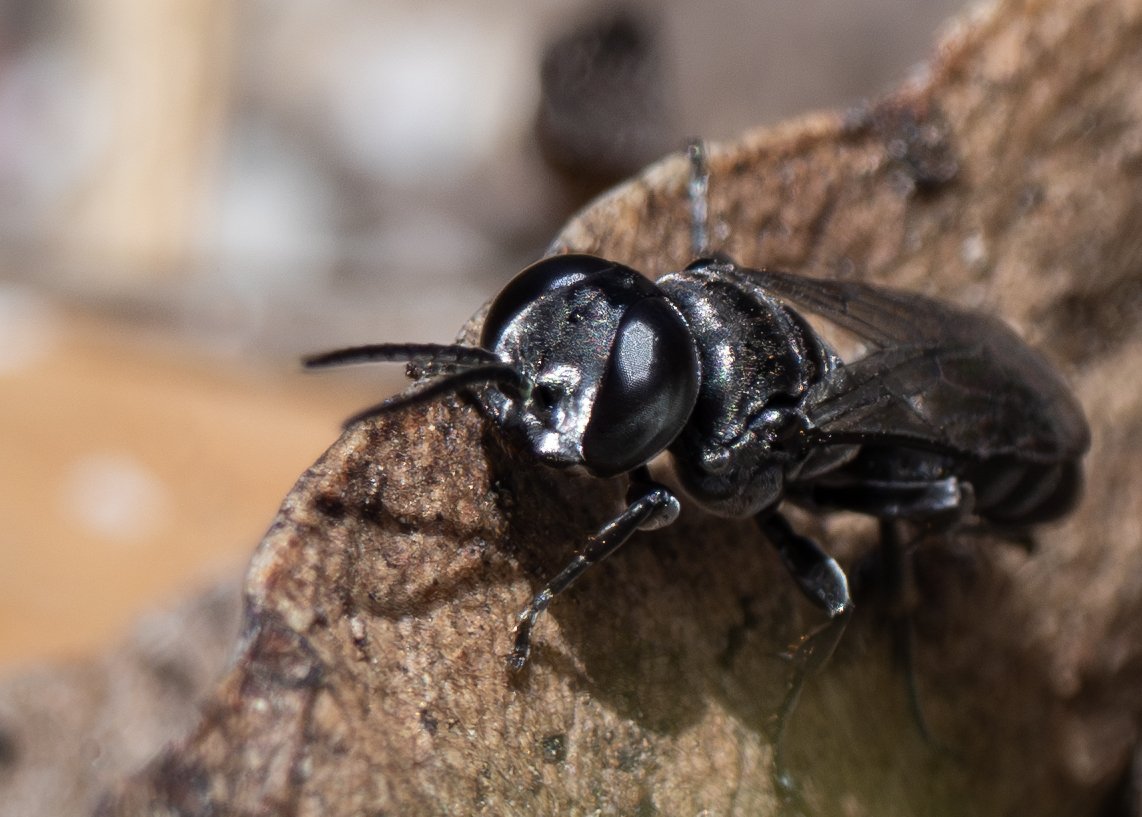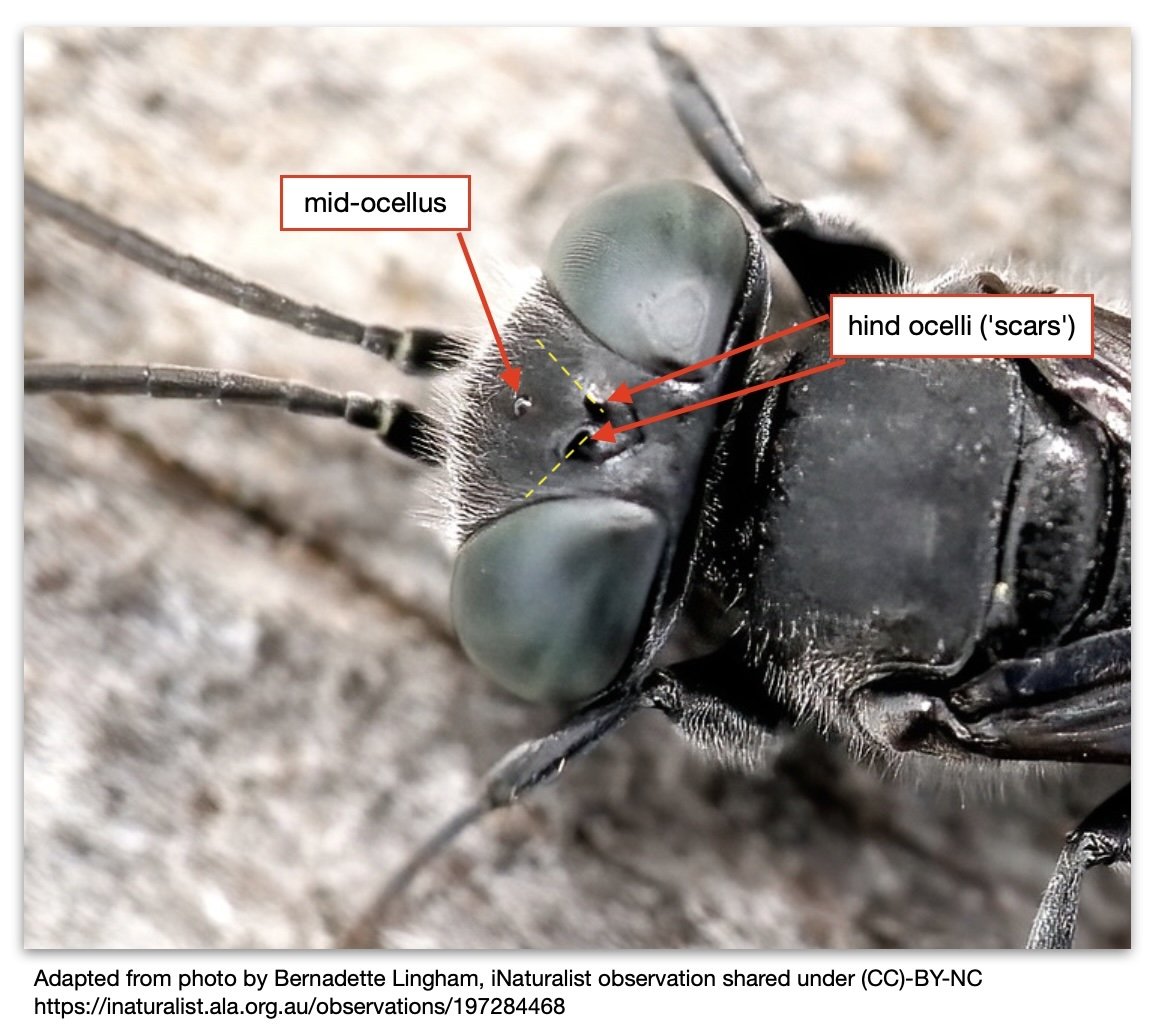Larrini (CRABRONINAE)

Workbook
In my ongoing crabronid project, I have left this tribe to last … perhaps because we rarely see them here in the forest. It is also a rather tricky group. The genera can be difficult to distinguish in all but the clearest set of field photos. Even the features that distinguish the two subtribes – the ridges and depressions of the frons – can be a challenge to visualise. Indeed Bohart & Menke (1976) emphasise the problem of differentiating Larra from Liris on morphological grounds, commenting “…(one could)… unite Liris and Larra, because the characters which separate the two are rather weak, expecially in the male” (p. 240).
So that’s my justification for considering it a tricky group. Below is my first reconciliation attempt.
The following table and images are an aid to genus-level identification of Australian Larrini.
What to look for
The summary table above emphasises the importance of the hind ocelli and the shape of the frons, as well as tarsomere shape and the hairiness (or otherwise) of the pygidial plate. All well and good, but it’s instructive to see what these features actually look like in a photo.
I’ve taken advantage of the sightings shared on iNaturalist. Thank you to every person out there, with a camera, recording and sharing what they see in nature :)
Note: many photos taken in the field cannot be confidently identified to genus, or even sub-tribe. With this group of wasps, the angle of the photo is every bit as important as the resolution (i.e. quality) of the image.
Liris vs spider wasp
It is not uncommon for Liris to be mistaken for spider wasps, particularly Turneromyia or Ctenostegus. The black-&-silver patterning, relatively long legs, and behaviour can appear quite similar. The key differences are in the eye shape, ocelli, and the shape of the pronotum.
family CRABRONIDAE: genus Liris
Photo by brenmcken, iNaturalist observation shared under (CC) BY-NC
https://inaturalist.ala.org.au/observations/70689364
family POMPILIDAE: probably Turneromyia or Ctenostegus
family POMPILIDAE: probably Turneromyia or Ctenostegus
Bits & Pieces
A mixed collection of original descriptions and published illustrations.
Bohart, R.M. & Menke, A.S. 1976. Sphecid Wasps of the World: a Generic Revision. Berkeley: Univ. California Press
Kohl, F.F. 1884. Neue Hymenopteren in den Sammlungen des zoologischen Hof-Cabinetes zu Wien. ii. Verhandlungen der Zoologisch-Botanischen Gesellschaft in Wien 33: 331-386
Smith, F. 1858. Catalogue of the hymenopterous insects collected at Sarawak, Borneo; Mount Ophir, Malacca; and at Singapore, by A.R. Wallace. Journal of the Proceedings of the Linnean Society of London 2: 42-130
Turner, R.E. 1908. Notes on the Australian fossorial wasps of the family Sphegidae, with descriptions of new species. Proceedings of the Zoological Society of London 1908: 457-535 pl. xxvi
Turner, R.E. 1910. New fossorial Hymenoptera from Australia. Transactions of the Entomological Society of London 1910: 407-429 pl. 50
Turner, R.E. 1916. Notes on fossorial Hymenoptera. XX. On some Larrinae in the British Museum. Annals and Magazine of Natural History 8 17: 248-259
This is a workbook page … a part of our website where we record the observations and references used in making species identifications. The notes will not necessarily be complete. They are a record for our own use, but we are happy to share this information with others.




























